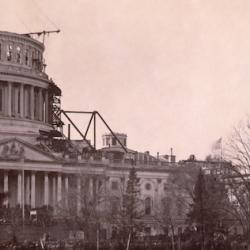The Federal District court in the Kim Davis case concluded that requiring her to sign same-sex marriage licenses didn’t violate her free exercise of religion. She still could do all those quaint things that religious people do:
“Davis remains free to practice her Apostolic Christian beliefs. She may continue to attend church twice a week, participate in Bible Study and minister to female inmates at the Rowan County Jail. She is even free to believe that marriage is a union between one man and one woman, as many Americans do. However, her religious convictions cannot excuse her from performing the duties that she took an oath to perform as Rowan County Clerk.”
Eugene Volokh agrees that Davis doesn’t have the right to refuse to issue marriage licenses entirely, but he disputes the rest of the reasoning: “If Davis believes that it’s religiously wrong for her to issue licenses with her name on them, ordering her to do that indeed burdens her religious beliefs, enough to trigger the Kentucky Religious Freedom Restoration Act. And giving her the more modest exemption from the include-the-court-clerk’s-name requirement might therefore indeed be required by the Kentucky RFRA.”
But the bigger issue is the court’s narrow conception of what “free exercise” entails. She can attend church, go to Bible study, minister to prisoners, and the court even deigns to grant her the freedom to believe that same-sex marriage is wrong. She is free to exercise her religion as long as it remains relatively private, as long as it remains contained.
That’s not surprising. Every society has to place restrictions on the free exercise of religion if it is going to be a functioning society at all. The whole issue is what those restrictions are, who determines them, and how they are justified. If the debate over religious freedom ever gets to that fundamental level, then we’ll know we’re getting somewhere.











